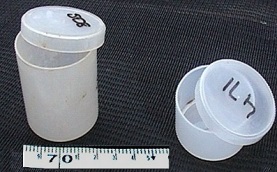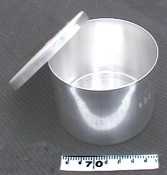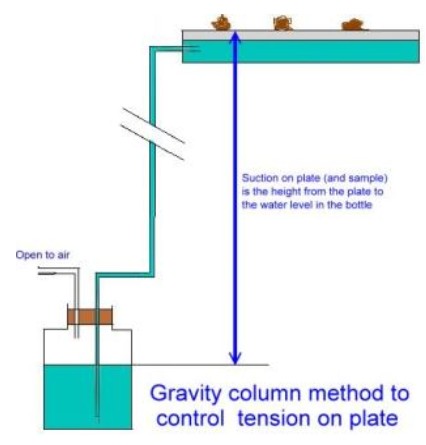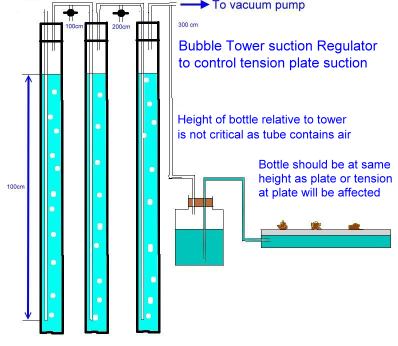|
|
|
|
 |
|
|
|
This section lists a number of useful items which I have had to source for my laboratory. 1. Synthetic soil mixes - for use as contact materials, or when minimal chemical reaction is needed from a porous material. Includes how to make a silicate powder tension plate. 2. Moisture Cans - polypropylene and metal. Needed for measuring the water content of soils at 105C 3. Tension Plates - for bringing soils to a set moisture suction potential. 3a How to set up a suction plate system 4. Saran Resin (or alternatives !!) - for coating soil aggregates to measure their volume 5. Pot water controller - to maintain the water content of pots at a fixed suction or water content 6. Transparent Adhesive Scales - for sticking onto glass or clear plastic tubes to convert them to ‘measuring cylinders’ 7. Vacuum grade laboratory taps: These taps are plastic - so they dont corrode. They have 1/4 inch barb fittings for laboratory tubing sizes, and they do not leak - even under 200kPa pressure or suction. |
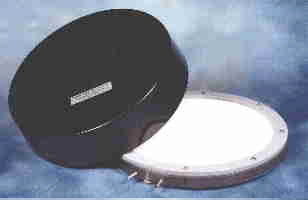 |
|||
|
New tension plates: Soil Water Solutions can now source ceramic plates with air entry 40kPa (400cm water suction). These plates have good flow rates and are suitable for all suction plate operations up to 40kPa. ie good for 10 kPa field capacity measurements. The ceramics are available in a range of sizes and shapes - and the final dimensions of the Soil Water Solutions plates will depend on what is available at the time at the time of order. As a guide, rectangular plates 35 x 38cm $550 GST incl (see photo right) or round plates 33cm diam ($450 incl GST) Tension plate refurbishment: many of the plates circulating in CSIRO or universities are very high flow rate 80-90kPa air entry plates. The technology for making this ceramic seems to have been lost. If you have old, clogged or leaking tension plates we can refurbish the ceramic to as-new condition and (if necessary) fit it to a new base Price approx $500 I will need to see the plate to give a better quote NOTE: Refurbishing tension plates or is done on an ‘every care but no responsibility’ basis - ie if we break your plate we won’t charge you, but we will not replace the plate either. Pressure plates: Soil Water Solutions Do not sell pressure plates or the rubber backed ceramic inserts for them. Try www.ictinternational.com.au But if you have plates which need new rubber backing - we can replace the backing for $150 per plate NOTE: this is done on an ‘every care but no responsibility basis’ - we sometimes break a plate ! if that happens we wont charge you, but we will not replace the plate either. |
|
Saran Resin : to water proof soil aggregates so their density can be measured. The bad news : SARAN is no longer made by Dow Chemical and is hard to get. However, a google search will locate fireworks manufacturers who may supply it. (it is used as fuel in fireworks). Ordinary PVA house paint is a good substitute for non swelling soil. Soil Water Solutions has found several good substitutes for difficult soils - call or email for the latest findings |
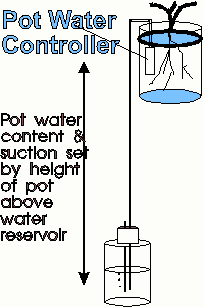 |
||||||
|
Pot water controller: Watering experimental pots is an onerous and exacting task - especially if the pot must be held close to a fixed water content. Our answer is to fix the pot at a particular soil water tension. Just place our pot water controller device in your pot connect it to a water reservoir below the level of the pot and the water content will be kept constant, drawing water from the reservoir as needed. Controllers are $15 each and operate best with the reservoir 0.5 m below the pot. |
||||||
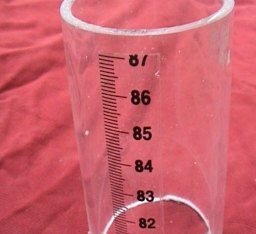 |
||||||
|
Transparent Plastic adhesive scales: 0-80cm We use these to put these waterproof scales on the permeameters we sell. They can be applied to glass or plastic to provide a measurable scale of water levels etc. These are bumper sticker technology and will last a long time even in wet dirty conditions. If you only want 20cm lengths, we can supply offcuts numbered from 60-80cm for $1 each Price 0-80cm (full length scales) $10 each incl GST |
||||||
|
|
|||||||||||||||||||||||||||||||||||||||||||||||||||

